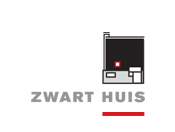Peter Lagast
Trompe Le Monde
14 Jan 2024 - 24 Feb 2024
In the exhibition 'Trompe le monde,' the worlds of Belgian artists Peter Lagast (1972) and Thierry Grootaers (1974) converge.
After graduating in 1995 from the painting workshop at the Higher Institute for Science and Art (St-Lucas Ghent), Peter Lagast embarked on a versatile artistic journey involving drawing, painting, travel, and sculptural ventures. In recent years, the focus has primarily shifted to the layering of painting on existing images, such as postcards, posters, paintings, and especially old record covers.
Peter Lagast began painting record covers during a residency at Be-Part in Waregem in 2017, a practice that evolved into an ongoing project and has since become a recognizable cornerstone of his oeuvre. In an inventive and sometimes almost humorous manner, the artist engages with the visual characteristics inherent in each record cover. Details are emphasized—sometimes a body part, then a word or environmental element—and given a new, painterly context. In the multitude of exhibited works, some recurring motifs can be identified: the house (the place), the woman (Eros), the landscape (Eden), and above all, painting and its muses.
The layering of the images recalls our zap culture, which has now become more of a swipe culture. This new visual culture is not only rich in art historical references and parodies but also contains visual references to what affects and passes through our daily lives. Just as advertising transitions to a news report, a travelogue, or an art historical note, the various layers in Peter Lagast's images seamlessly merge. They unleash an infinity of possible stories, best left to the viewer. (text by Peter Lagast)
—
Thierry Grootaers creates paintings that secretly speak of the oppressive 1950s or 1980s, spent in a dark house and dreaming of liberating, modernist architecture, light, air, and freedom. The images we see are deceptive. They evoke architecture and interior design because they remind us of scale models of houses. However, such detailed models have never existed, except for dollhouses. What is happening here? It seems as if illustrations from illustrated magazines come to life, with a false spatiality made possible by painting. Looking at the same phenomenon from the perspective of painting, we see images that enable a new pictorial spatiality, a playground for color fields playing out at different depths.
Most paintings are created in three movements. First, color fields are applied with acrylic paint and a spalter brush. Then a figurative representation is added, described by Grootaers as a 'scénette' (little scene, charade), and it is waited and watched. One wall of the studio is adorned with numerous paintings in progress, slowly revealing how they should be completed. Sometimes the scene is repainted (partially), sometimes it is erased or sanded away. Often, the painting receives new monochromatic color fields that seem to hold up at the front of the painting. The figurative layer gains shadows and volume, the first and third layers are flat.
Now that we know how they are constructed, we look again at these strange, flat structures, seeming shelters for unspoken thoughts. The characters appear entangled in timeless, frozen predicaments. Doghouses without roofs are drawn with incorrect perspective and without shadow, keeping the front and back walls the same size, like two geometrically constructed planes that only gain reality value within the painting (not as representation but as a color field). The cars and houses seem to speak of a security simultaneously experienced as suffocating, a suffocation that may only be transcended through painting. Because above all, all elements of these paintings, whether mere color fields or representations, seem to be puzzle pieces in complexly constructed, new pictorial spaces that can only exist as paintings. (text by Hans Theys)
